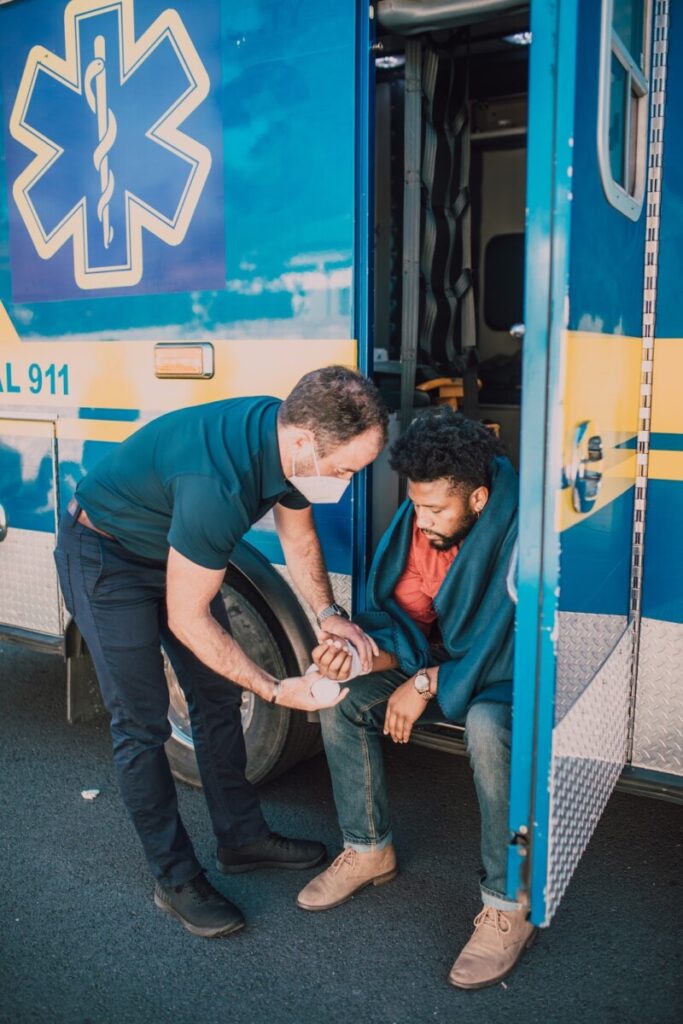Occupational injuries refer to physical harm or ailments individuals sustain while executing their work-related duties. These injuries encompass a wide spectrum, ranging from minor cuts or bruises to more severe instances like fractures, burns, or chronic disorders such as carpal tunnel syndrome.
The data shows a concerning trend. According to the Bureau of Labor Statistics, approximately 2.8 million nonfatal workplace injuries and illnesses were reported in the United States in 2019 alone. This indicates that occupational injuries are a widespread issue that warrants attention.
Effective handling of occupational injuries is of paramount importance. When workers are not safeguarded, the consequences can be detrimental not only to the employees but also to the entire organization. Inadequate response can lead to prolonged employee absenteeism, legal complications, and a tarnished reputation.
As part of a comprehensive management strategy, evaluating treatment options, such as osteopathy vs physiotherapy, is essential in ensuring injured employees receive the most appropriate care for their specific ailments. Conversely, appropriate management fosters a culture of safety, minimizes financial burdens, and boosts employee morale and productivity.
The following section outlines the steps in dealing with occupational injuries.
Immediate Response To Occupational Injuries
An efficient and prompt response to an occupational injury is critical to mitigate harm and ensure proper care.
Assessing The Situation
When an occupational injury occurs, time is of the essence. The initial step involves swiftly evaluating the gravity of the situation. It is imperative to ascertain the nature of the injury, whether it’s a minor scrape or a more critical condition, and gauge the immediate needs of the injured party.
Administering First Aid
Post assessment, immediate medical attention through first aid must be administered, if necessary. This might include disinfecting a wound, applying pressure to stanch bleeding, or ensuring the injured person is in a safe and comfortable position. First aid can be pivotal in minimizing the severity of the injury.
Reporting The Injury To The Supervisor Or Manager
Subsequent to first aid, it is crucial to inform a supervisor or manager about the incident. This is a critical step as it sets into motion the internal procedures for handling occupational injuries and ensures that the event is acknowledged by the organization.
Documenting The Incident
Detailed documentation of the incident is non-negotiable. This includes recording the specifics, such as the time, location, nature of the injury, and any potential witnesses. Well-maintained records are invaluable, as they can be instrumental in investigating the incident and are vital for any ensuing workers’ compensation claims.
These immediate steps establish an effective foundation for managing the situation and lead the way for subsequent measures.
Seeking Medical Attention
Following the immediate response, securing professional medical care is imperative.

Importance Of Prompt Medical Care
Even if an injury appears to be minor, it’s prudent to consult a healthcare provider. A professional evaluation ensures that any underlying issues are addressed and proper treatment is prescribed.
Understanding Workers’ Compensation
Workers’ compensation is a specialized form of insurance that provides wage replacement and medical benefits to employees injured in the course of employment. It’s vital for injured workers to familiarize themselves with the benefits and limitations of workers’ compensation to effectively navigate the claims process.
Communicating With Healthcare Professionals
Engaging in open communication with healthcare professionals is pivotal. Injured employees should provide a comprehensive account of the incident and any symptoms. Such transparency enables healthcare providers to make well-informed decisions regarding the most appropriate course of treatment.
Securing professional medical care and communicating effectively with healthcare professionals ensure the injured employee’s well-being.
The Rehabilitation Process
The road to recovery following an occupational injury often necessitates physical therapy and various treatments.

Physical Therapy And Other Treatments
Therapeutic interventions, such as manual therapy, exercise programs, and pain management techniques, are crucial in restoring functional mobility and alleviating discomfort. In certain cases, patients might grapple with the decision between osteopathy and physiotherapy, both of which have their distinct approaches to treating musculoskeletal issues.
Psychological Support
The psychological ramifications of occupational injuries are frequently underestimated. Injured workers may wrestle with anxiety, depression, or even post-traumatic stress disorder (PTSD). It is imperative to acknowledge the psychological facet of rehabilitation and foster an environment where mental health support, be it counseling or support groups, is accessible and encouraged.
Return-To-Work Programs
Facilitating a smooth transition back into the workforce is another critical element of rehabilitation. Return-to-work programs are designed to reintegrate injured employees into the workplace in a structured and supportive manner. These programs often include modified duties, flexible schedules, and ongoing monitoring to ensure that the employee’s transition is both safe and sustainable.
It’s important to recognize that an employee’s physical capabilities might change post-injury. Encouraging and supporting an injured worker in adapting to these changes is indispensable.
Preventing Future Occupational Injuries
Equipping employees with the knowledge and tools necessary for maintaining a safe working environment is fundamental. This could encompass conducting regular safety training, distributing educational materials, or organizing workshops. Regular audits and assessments should also be performed to ensure compliance.
An often overlooked aspect of workplace safety is the maintenance and updating of equipment. Outdated or malfunctioning equipment can be a recipe for disaster. Implementing a rigorous schedule for equipment maintenance and keeping abreast of technological advancements that can enhance safety is crucial.
In essence, safety education plays a vital role in safeguarding the well-being of employees and, by extension, the success and integrity of the organization.
Conclusion
It is imperative to underscore that the prevention and management of occupational injuries are shared responsibilities that rest on the shoulders of both employers and employees. A thoughtfully structured and proactive approach can yield dividends in the form of a healthier workforce, minimized financial implications, and an organizational culture steeped in safety.
